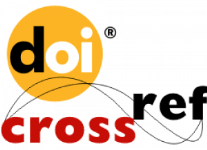PENERAPAN MODEL KIRKPATRICK UNTUK MENGEVALUASI PELATIHAN TERHADAP KINERJA KARYAWAN PT TELKOM INDONESIA
DOI:
https://doi.org/10.37606/publik.v11i2.1124Keywords:
AfRAM, Training Evaluation, Kikrkpatrik ModelAbstract
This research aims to measure the effectiveness of the training program organized by Telkom-ITDRI (Indonesia Telecommunication & Digital Research Institute), the evaluation approach used is the Kirkpatrick Four-Levels method including, level 1 reaction (reaction), level 2 learning (learning), level 3 behavior (behavior) and level 4 result (result). The research method used in this research is descriptive with a quantitative approach. This research data was collected through distributing questionnaires and sampling was carried out using probability sampling techniques using the proportional sampling method method. There were 280 respondents in this study who were participants in the AfRAM (Agility for B2B Regional & Account Management Team) training. The analytical method used in this research is a simple regression analysis test and multiple regression analysis test and processed using SPSS 27 software. Based on the descriptive analysis, it can be concluded that the level 1 reaction variable is in the category, level 2 learning and level 4 result are in the "good" category, level 3 behavior is in the "very good" category. The relationship between reaction to employee performance has a significant effect. The relationship between learning and employee performance does not have a significant. The relationship between behavior and employee performance is influential but not significant. The relationship between results and employee performance has a significant effec. Furthermore, the relationship between reaction, learning, behavior and results simultaneously influences employee performance, this shows that the training provided is effective and able to improve employee performance.


























